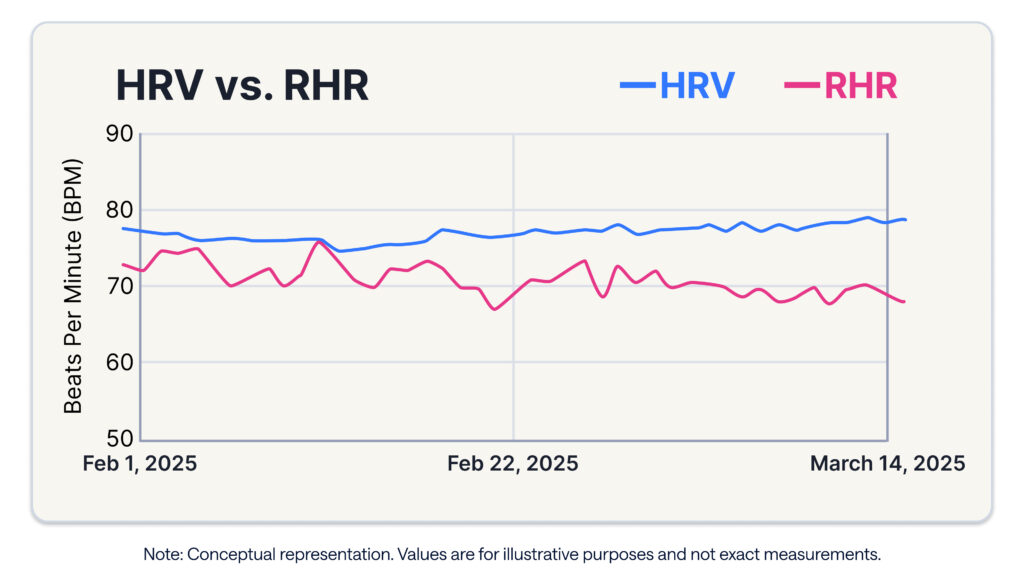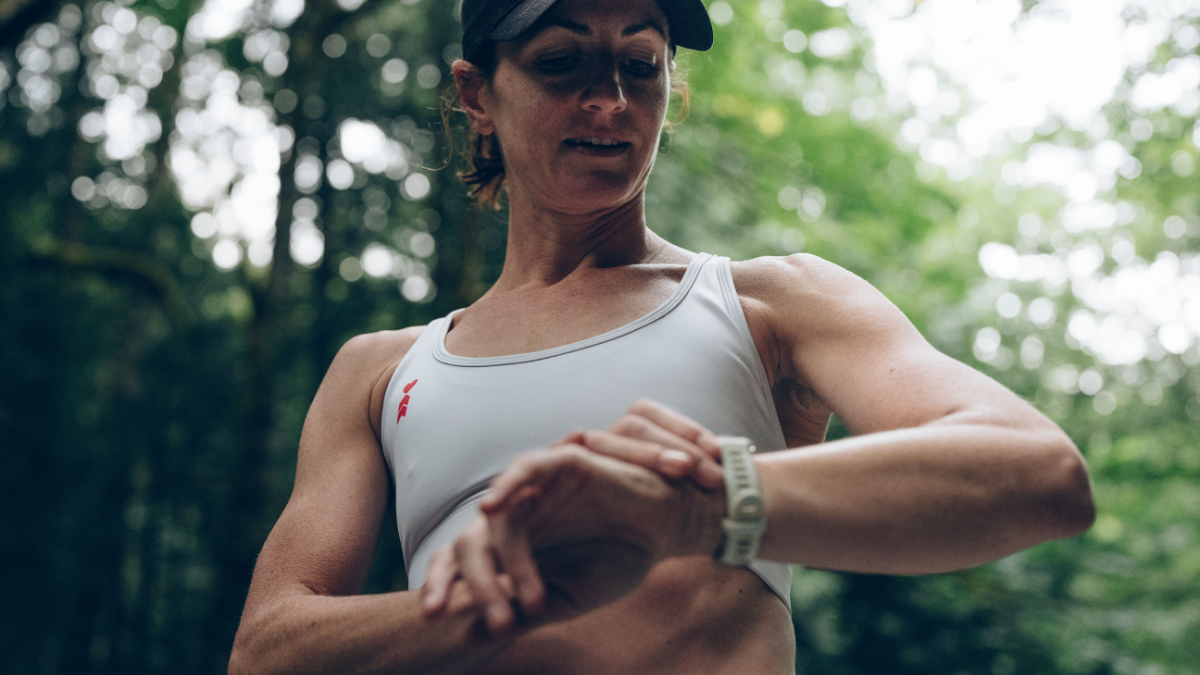HRV monitoring is best known as a way to quantify recovery following extended or intense workouts, but HRV can be just as useful during the late winter and early spring base-building phase.
Aerobic Base Building and HRV
During this time, the focus is on long, steady Zone 2 runs, rides, and swims, so that you can build the accumulated mileage that forms the bedrock of aerobic capacity. While there may not be high peaks in training load to recover from, there is a lot to be learned from your pre-season steady-state HRV and resting HR baselines. This includes watching your all-important aerobic fitness base develop, identifying when you should take it easy during viral infections, and even helping to fine-tune your lifestyle to minimize the impact of stress.
What’s really interesting is seeing the theory of aerobic base-building work in practice. The chart below shows how a Masters-age club cyclist’s heart rate variability (indicated by the blue line) trended steadily upwards while resting HR, which is a good indication of fitness (indicated by the pink line), trended steadily downwards during a period averaging 385 km of steady riding per week. This example was taken while the athlete was working toward the Mallorca 312.

The ability of changes in HRV baseline to predict later changes in fitness has been studied in college team soccer players during an 11-week pre-season fitness development program. It was found that the change in the weekly average HRV in members of a female collegiate soccer squad from week 1 to week 3 was able to predict almost perfectly the eventual change in fitness, as measured by a second VO2 max test at the end of the program. These were positively correlated.
The message is that if your HRV baseline is heading upwards during your base-building phase, accompanied by a decrease in your resting heart rate, you are very likely increasing your fitness.
Your Lifestyle and HRV
As I’ve written about many times, however, your HRV (and ability to recover) depends at least as much on your lifestyle as it does on your training. This means that managing your nutrition, sleep, and stress levels in daily life is essential.
The base-building period is an ideal one to experiment with small lifestyle changes that can make a big difference to the effectiveness of your recovery. Being a holistic indicator, HRV is a great way of finding out if these changes are making a positive or negative impact on your body. It’s very individual and also very sensitive, so by changing something like the time you usually go to sleep or introducing a deep breathing exercise into your daily routine, HRV will let you know within a few days whether that change has given you some benefit. The key is to change just one thing at a time and to maintain a regular routine so that you see the changes and their effects quickly and accurately.
A study at the KIHU Olympic research institute in Finland found that in a group of 15 recreational endurance runners, those with the highest HRV responded much better to an 8-week intensive training program (with a mean 6% increase in VO2 max) than those with the lowest HRV (who improved their VO2 max by only 1% on average).
Finding ways to improve your recovery and using HRV as a tool to measure those improvements means not only that you will be able to tolerate higher weekly training loads, but will become more resilient all-round.
As a final reason to measure HRV during your winter and spring base-building period, HRV can be very useful in predicting oncoming colds and upper respiratory tract infections. It gives you a small window of time to take preventative action, such as avoiding training and boosting your immune system with natural diet choices or supplements.
As a tool for calibrating the effectiveness of your base-building training and lifestyle improvement activities, HRV can be much more than a daily traffic light that tells you when to train, how hard to train, and when to rest. With minimal investment and as little as 60 seconds each day for a reading, what have you got to lose in adding HRV to your tool kit this season?
References
(2014, May 27-31). ACSM Annual Meeting 2014, Orlando, Florida.
Esco, M.R. et al. (2016, April 4). Initial Weekly HRV Response is Related to the Prospective Change in VO2max in Female Soccer Players. Retrieved from https://pubmed.ncbi.nlm.nih.gov/27042998/
Vesterinen, V. et al. (2011, August 3). Heart rate variability in prediction of individual adaptation to endurance training in recreational endurance runners. Retrieved from https://pubmed.ncbi.nlm.nih.gov/21812828/








